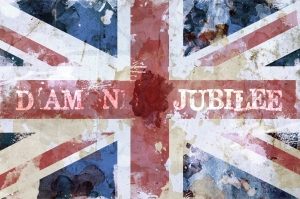Working conditions when the Queen was crowned
Then (1952) and Now (2012)
 As celebrations kick off around the world for the Queen's Diamond Jubilee, including an extra public holiday for workers in the UK on New Zealand's Queen's Birthday long weekend, the team at Thomson Reuters NZ thought we’d take a peek at the workforce and working conditions in the year of her coronation - 1952.
As celebrations kick off around the world for the Queen's Diamond Jubilee, including an extra public holiday for workers in the UK on New Zealand's Queen's Birthday long weekend, the team at Thomson Reuters NZ thought we’d take a peek at the workforce and working conditions in the year of her coronation - 1952.
Money Changes
The currency in those days included pounds (£), shillings (s), and pence (d). There were 12 pence in a shilling and 20 shillings in a pound. According to one website, children were very good at fractions in those days! When the currency was decimalised in 1967, one shilling became 10 cents, 10 shillings became $1, and £1 became $2.
Statistics gleaned from Statistic New Zealand's digital yearbook collection reveal the following interesting work-related facts for the year when the Queen took the throne.
The Minimum Wage
The minimum wage rate in 1952 (as prescribed by the Minimum Wage Act 1945) was different for men and women. The minimum wage was said to be a "basic wage" and was "intended to enable a man to maintain a wife and three children in a reasonable standard of comfort". The minimum wage for all workers aged 21 or older was as follows:
|
Gender |
Minimum wage in 1952 |
Decimal equivalent |
| Males | 3s 9d per hour, £1 10s per day, £7 5s per week | $0.39 per hour, $3 per day, $14.50 per week |
| Females | 2s 6d per hour, £1 per day, £4 16s 4d per week | $0.25 per hour, $2 per day, $9.65 per week |
According to the yearbooks, the average weekly wage paid out in October 1952 was £10 13s (decimal equivalent is $21.30).
Sixty years on, the minimum wage is 37 times higher, at $540 for a 40-hour week, and the average weekly wage is more than 48 times greater – average weekly earnings for the March 2012 quarter were $1031.75.
Holidays - yes, we have more!
In 1952, all workers were entitled to two weeks' annual holidays under the Annual Holidays Act 1944, whether permanently or casually employed (minimum entitlement is now four weeks).
Men/Women in the Workforce
There were 572,200 males and 182,400 females employed in 1952 (when the total population of New Zealand was around 2 million). According to the Household Labour Force Survey for the March 2012 quarter, there are now 1,189,800 employed males and 1,041,100 employed females (the total population of New Zealand is now 4.4 million). So it’s safe to say there is a much greater proportion of women in today’s workforce.
Careers - Smutterman, anyone?
The careers available have been transformed. In 1952, there was definitely no IT department and probably no HR department. There were butchers, bakers, and possibly quite a few candlestick makers. Butchers got paid an average weekly wage of 209s 8d ($20.97), bakers got 191s 3d ($19.13), and the interesting-named role of “Assistant Smutterman” in the flour mill got 177s 4d ($17.74). One of the best-paid manual jobs was wool-presser, who received the princely sum of 425s 4d ($42.54) per week on average.
Based on pay figures on the Careers NZ website, butchers get paid around $800 a week these days, bakers get in the region of $720 a week, and wool pressers get around $700.
Unions & Strikes
Unions were much more part of working life. Union membership (of over 400 unions) was in the range of 273,000 members in 1952 and that year there were 50 strikes involving 16,297 employees, with 28,123 working days lost. According to the yearbook, the only "serious dispute" that occurred during 1952 was a disagreement as to wages between tradesmen in freezing works and their employers. So some things don’t change.
In 2011, there were 11 strikes involving 2098 employees, with 4850 working days lost. Latest labour market statistics suggested there were 181 unions in 2003 with a total membership of 341,631.
Fatal work-related accidents
And last but not least, records show there were 54 fatal work-related accidents in 1952, compared to 41 in 2011 (bearing in mind the working population today is around three times larger).